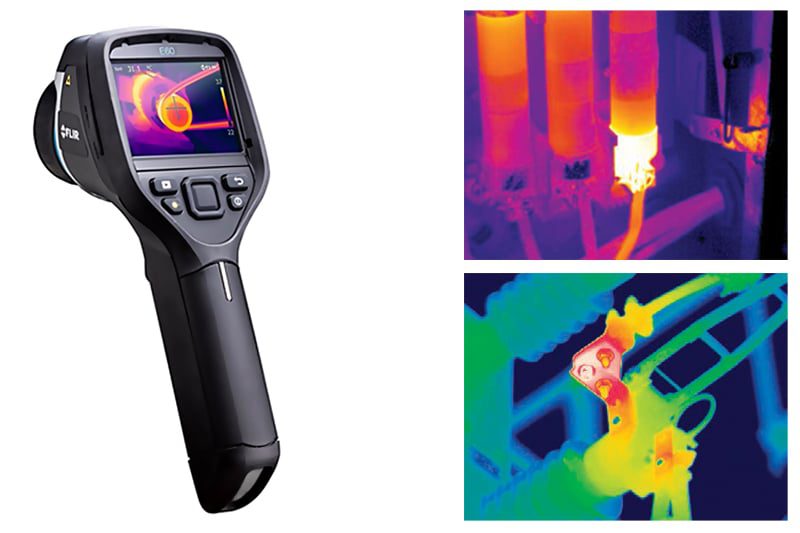Uses Of Thermal Imaging In The Mining Industry

Modern mining operations rely on the efficient and reliable operation of their substantial equipment inventories and infrastructure to stay competitive.
Protecting the integrity of those assets and keeping them in good repair helps to prevent unexpected and costly downtime and enables mining companies to achieve their objectives of cost-effective, high level production. And that’s where thermal imaging or thermography plays a significant role.
Thermal imaging has become a crucial diagnostic tool in the mining industry for monitoring the condition of equipment and machinery. It’s a safe, non-contact and non-destructive testing method which enables operators to identify possible problem areas early on, plan maintenance with minimal disruption, schedule preventative maintenance and test or observe materials in inaccessible or hazardous areas.
Examples of areas where non destructive testing with thermal imaging has proven to be invaluable include shafts, boilers, heat exchangers, pipes and other metal or plastic parts, bearings, drag lines, conveyors, motors, compressors and a variety of other electrical systems. The mining industry also relies on heavy industrial cabling to provide continuous power or production, and thermal imaging helps minimise the likelihood of a breakdown of the cables through early detection of problems.
Thermal imaging essentially uses specialised cameras to see what the naked eye can’t. The cameras can ‘see’ in total darkness as well as see through air particulates such as smoke, fog and dust. They can also detect shallow defects (a few millimetres beneath the surface).
These cameras have internal detectors which identify very slight temperature variations and produce an image of that invisible infrared or heat radiation. For example, a loose connection in a transformer can cause corrosion which may then potentially result in connection failure, unplanned downtime or outages and may even be a safety risk. However, because heat is generally a good indicator of a failing component, the infrared camera would identify the loose connection and pick up the area of degradation in the very early stages, with engineers then able to prioritise timely and cost-effective intervention and repair work.
Equipment and infrastructure on a mine site represents a major capital investment and failure could be catastrophic. That’s another reason why thermal imaging cameras have become such a key diagnostic tool in mining operations because they’re highly sensitive and can pinpoint heat in the very early stages before irreversible damage occurs or there is any other serious consequence. Some advanced camera models are capable of detecting heat increases of less than 0.020C and given that 500C is the temperature at which typical electrical failures occur – their value in terms of early detection is extremely apparent.
Technological advances have significantly enhanced the capabilities and versatility of these NDT instruments, with some products now featuring built-in GPS technology which allows geo-referencing of the images, mobile apps and innovative software for real-time analysis and data sharing – even from remote field locations.
But while these cameras are highly sensitive and technologically advanced, they’re also sufficiently robust to withstand the challenging conditions experienced on many mine sites. They’re equally valuable locating tiny ‘hot-spots’ on a conveyor belt or hidden deep inside the electrical system of a heat exchanger as they are assisting mine personnel during exploration, rescue or fire-fighting efforts deep underground.
The mining industry relies on thermal imaging for a variety of purposes and if you would like to learn more about how these versatile tools can help your operation, you should call the Australian experts in technical equipment, Nexxis. They carry an extensive range of leading brands of thermal imaging cameras and will use their industry experience and in-depth knowledge of the mining industry to recommend a NDT solution that suits your individual needs.
